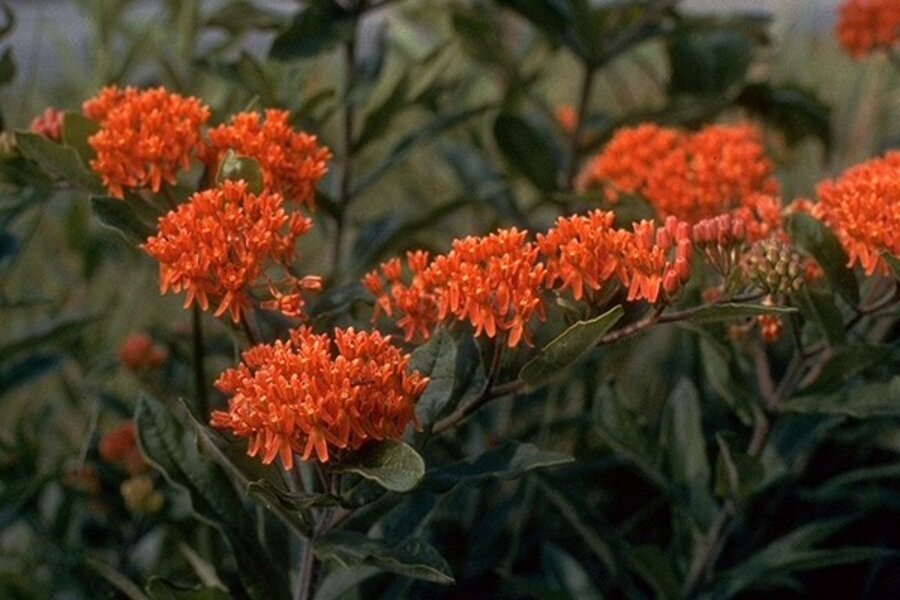Do you know the Mardi Gras plant?
Loading...
I feel like Colin Firth today, but not because I’ve won any awards. In his acceptance speech at the Oscars recently, Firth admitted to “stirrings” which could, at any moment, set his legs to dancing.
For my entire life, the road to New Orleans has made me want to second line all the way, so I know those stirrings. I’ll be dancing down the river this week to visit with gardeners and photograph their gardens, and, yes, do a little parading.
Local flavor
Some say we talk funny down South, where "ya’ll" and "whodat" prevail. Our English vernacular can be colorful and extends to the common names we give to plants. Usually the names come from a place or way the plants are used, and as long as we all know what we’re talking about, it hardly matters.
For example, one of the first photographs I took in New Orleans after hurricane Katrina shows a clump of Ruellia blooming wildly at streetside. Its blue trumpet flowers give rise to the name Mexican petunia, but around here, it’s known as "dooryard plant" because it so quickly fills the space beside the back door steps.
Clerodendrum bungei, a bully of a plant with large, dark leaves and a big pink flowerhead, has fans and detractors. Those who appreciate the nectar-filled flowers call it Mexican hydrangea, although it is neither. But those who find its habits and odor offensive have ironically named it Cashmere Bouquet or, more descriptively, Kashmir Bouquet. It definitely does not smell like the popular sweet soap of the first reference, but those who know say its aroma is more like the wet goats of Asia.
I’m convinced that more people would grow Euonymus americanus if they could figure out what to call it. The woody shrub is native to the South, angular in form, and ideal for shady spots. Its small flowers soon give way to precious seed capsules that pop open to reveal bright red berries in fall.
Each of those features gives rise to a common name: Strawberry bush, hearts a bustin’ and wahoo are all synonyms for this plant!
A New Orleans tale
Sometimes common names are entirely singular and make discussion difficult.
An extension agent tells the story of a phone call he received from a gardener shortly after he arrived to work in New Orleans. The lady wanted to know what to do about her "Mardi Gras plant," and he didn’t want to admit he’d never heard of it.
He got her to describe the problem and the plant, and finally the light bulb went on over his head. She was asking about Mahonia bealei, a rugged understory shrub popular in the South and known as Oregon grape holly.
The plant is not limited to the Northwest and is neither a grape nor a holly, but does have green leaves, yellow flowers, and purple berries. Those are the colors of Mardi Gras, and he thanked her for telling him its local name. “Oh no,” she said, “I’m the only one that calls it that!”
The unrelated shrimp and butterfly plants
Other common names are just plain confusing. There are at least three plants called "shrimp plant," a yellow (Pachystacys lutea), a red (Justicia brandegeana) and a blue (Cerinthe major purpurascens). All have a bract structure in their flowers that includes a curved "tail" that gives them their common name.
I treat them as annuals, but the red and blue sorts are able to tolerate temperatures into the upper 20s at least so their pots often survive the winter in my unheated greenhouse.
I don’t know for sure, but it seems like more plants have "butterfly" in their common name than any other one word. Asclepias, Buddleia, and Clerodendron, three very distinct plant families, share the moniker butterfly. The first is the host plant for monarch butterflies, aka milkweed. The second is butterfly bush and is a nectar plant for many in the species Lepidoptera. The third, but by no means the last of this group, is butterfly plant, a tropical plant with blue flowers that have large lower petals that rather resemble butterfly wings.
Botanical names are straightforward and logical, if hard to pronounce. They change when plant lineages are explored further and the syntax systems must be tweaked. The resulting confusion comes when the rules from on high take years to circulate among the rest of us.
So we know banana shrub, but whether it is Michelia figo or Magnolia fuscata depends on what decade you discovered it.
We know chrysanthemum, but did you know they changed its name to Leucanthemum a few years back? Still grows the same, but if you don’t know, it can be hard to look up detailed information or recognize new varieties that may not carry the old names.
I’m dancing off to Mardi Gras, and maybe I’ll see some Mardi Gras plants, too.
-----
Nellie Neal gardens in beds and containers and on windowsills in central Mississippi and south Louisiana. She never met a plant she didn’t want to propagate. Her website is GardenMama.com. To read more by Nellie, click here.





